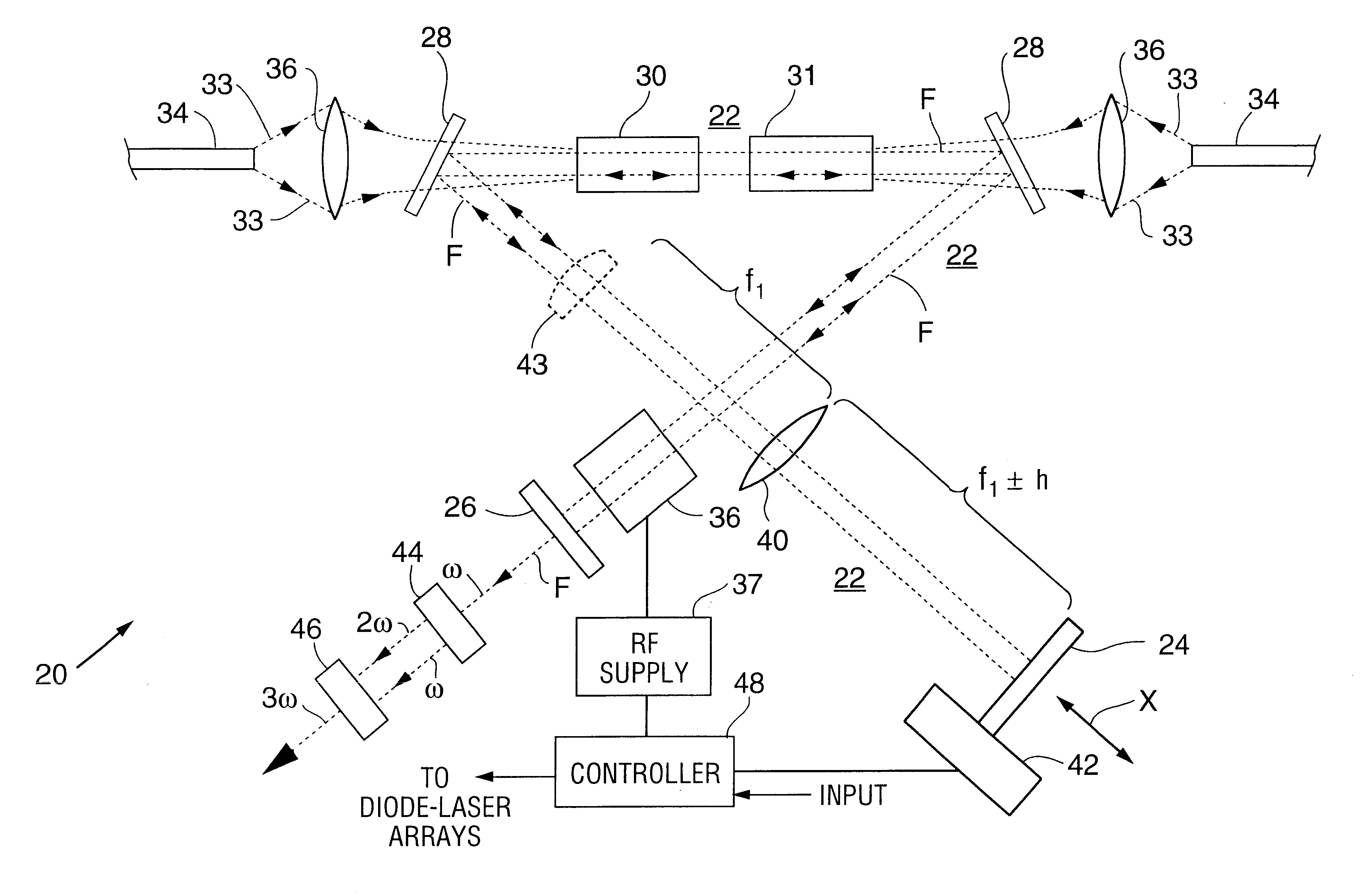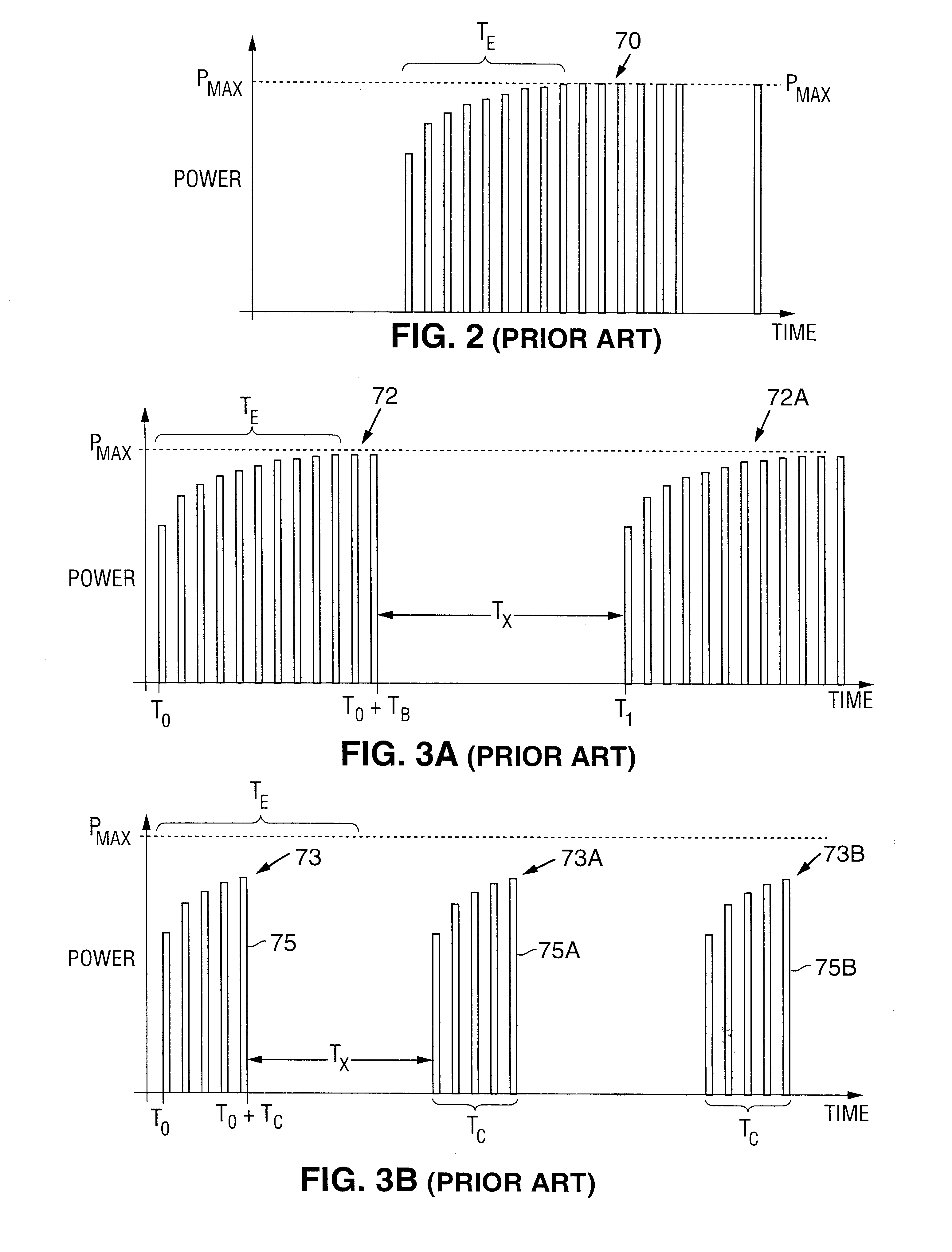Laser rod thermalization
a technology of laser rods and thermal insulation, which is applied in the direction of instruments, discharge tubes/lamp details, optical resonator shape and construction, etc., can solve the problems of exacerbated problems and imprecise processing operations
- Summary
- Abstract
- Description
- Claims
- Application Information
AI Technical Summary
Problems solved by technology
Method used
Image
Examples
Embodiment Construction
Turning now to the drawings, wherein like components are designated by like reference numerals, FIG. 1 schematically depicts one preferred embodiment of a laser 20 for performing a laser processing operation in accordance with the method of the present invention. Laser 20 includes a laser-resonator 22 terminated by a plane, maximally-reflecting mirror 24 and a partially-transmitting output-coupling mirror 26. Laser-resonator 22 is "folded" by fold-mirrors 28. Between fold mirrors 28 are located first and second gain-elements 30 and 31. Gain-elements 30 and 31 may be made from the same gain-medium or from different gain-media having characteristic emission wavelengths for laser radiation sufficiently close that the gain bandwidths thereof overlap. Gain-media 30 and 31 are optically pumped by light from a diode-laser arrays (not shown). Pump-light 33 from the diode laser arrays is transported by optical fibers 34 and focussed by lenses 36 through fold-mirrors 28 into the gain-media.
An...
PUM
 Login to View More
Login to View More Abstract
Description
Claims
Application Information
 Login to View More
Login to View More - R&D
- Intellectual Property
- Life Sciences
- Materials
- Tech Scout
- Unparalleled Data Quality
- Higher Quality Content
- 60% Fewer Hallucinations
Browse by: Latest US Patents, China's latest patents, Technical Efficacy Thesaurus, Application Domain, Technology Topic, Popular Technical Reports.
© 2025 PatSnap. All rights reserved.Legal|Privacy policy|Modern Slavery Act Transparency Statement|Sitemap|About US| Contact US: help@patsnap.com



